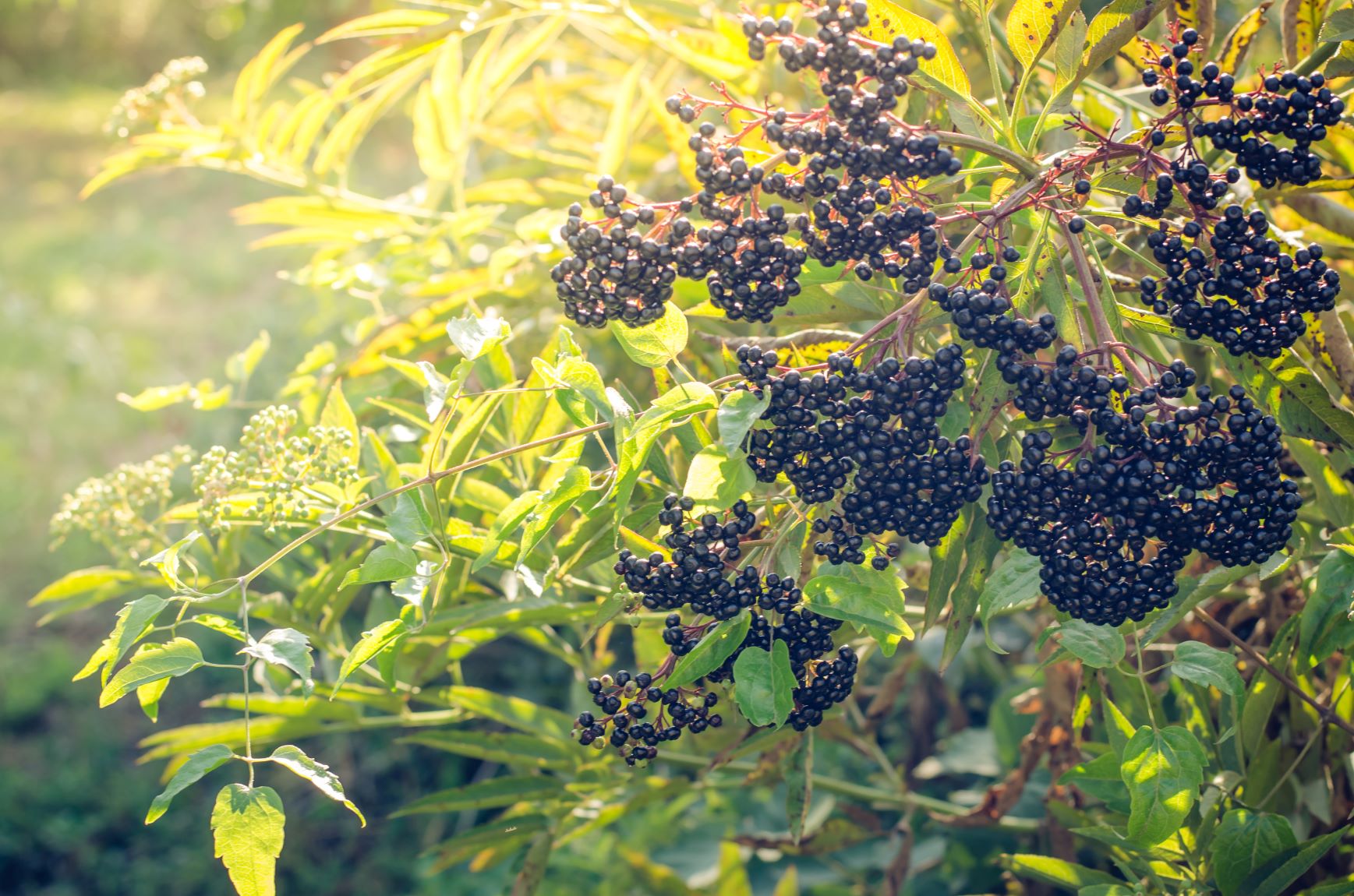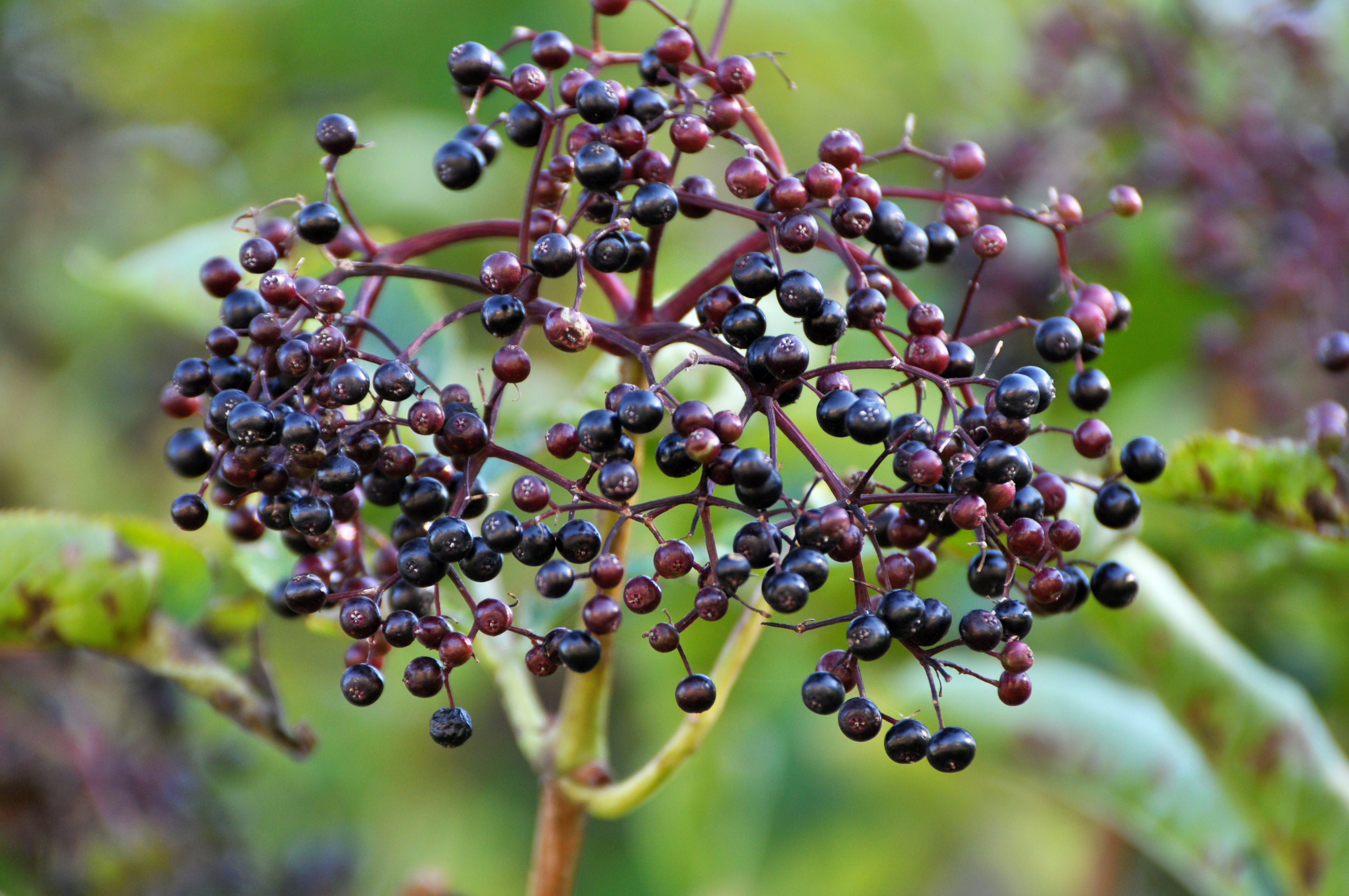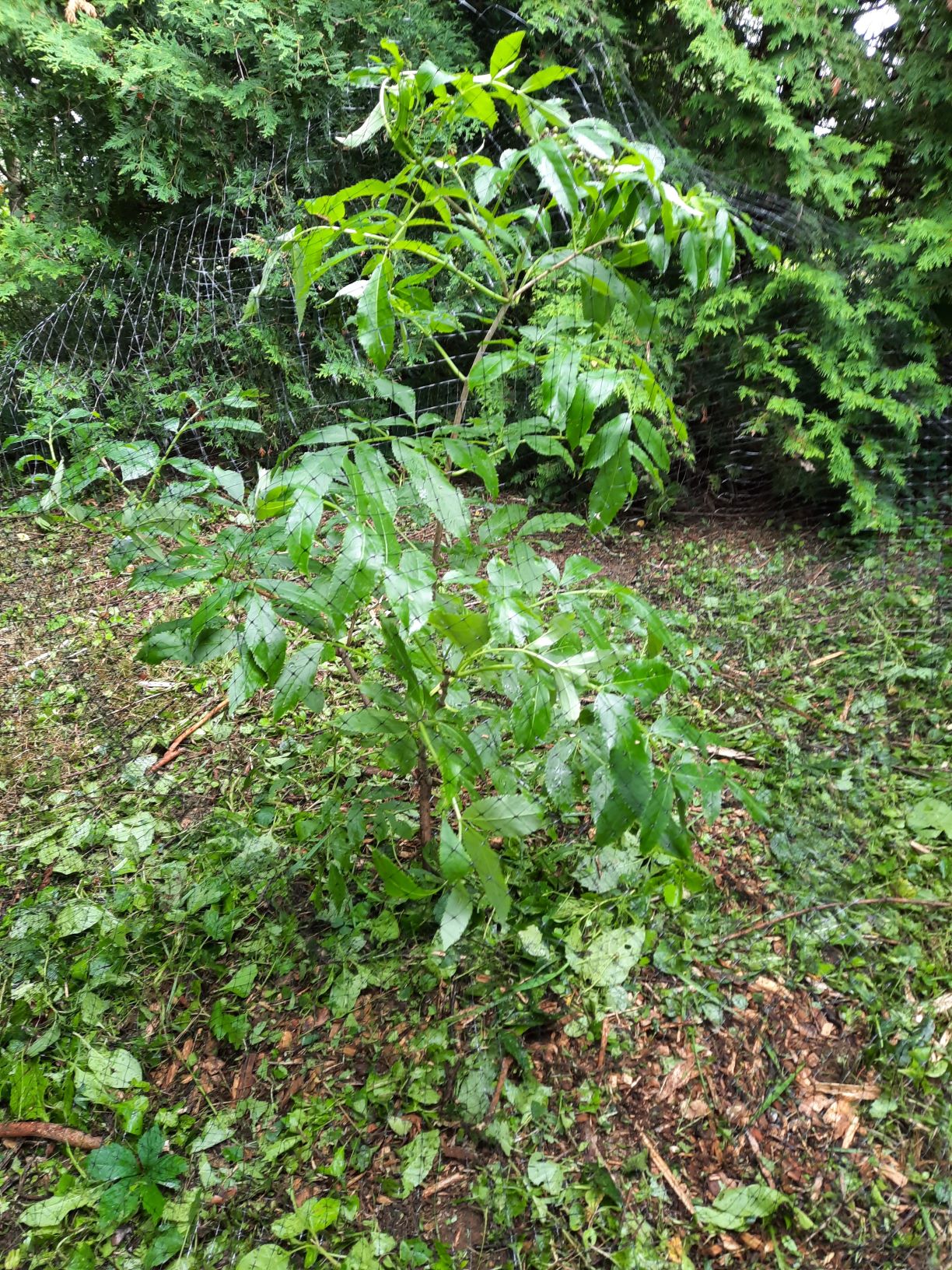Growing elderberries for home gardens
Learn things to consider for planting, care and selecting elderberry cultivars for the home garden and small scale production.
ISSN 1198-712X, Published November 2022
Introduction
The common elderberry (Sambucus canadensis) is a shrub that grows wild in much of Southern Ontario as well as in many areas in Eastern North America. Elderberry is not a significant commercial crop but is commonly grown in home gardens.
Elderberry is popular for its purple black fruit (Figure 1), which is used in pies, wines, jellies, jams, juices and soup. It can also be used as a natural colour in food products. Elderberry blossoms are also used in winemaking or can be deep fried. Elderberry is an ornamental as well as a fruit plant, with its spectacular fragrant flowers and attractive fruits.
Site
In its natural habitat, the elderberry is commonly found on fertile, moist soils. Under cultivation, it is tolerant to a wide range of soil conditions, but grows best on well-drained loam soils. Select a site with good soil drainage. An open area located away from woods allows free air movement, reducing disease problems, frost and potential insect and bird damage.

Soil preparation
Elderberry is a perennial crop that requires proper soil preparation before planting. A soil test will help determine existing nutrient levels and, ultimately, the suitability of the site. Information on soil testing can be obtained from the Agricultural Information Contact Centre at
On sandy soils or soils low in fertility, incorporate organic matter such as manure or peat, prior to planting, to increase moisture retention and provide nutrients. Cultivate and properly drain the site. Eradicating perennial weeds prior to planting by cultivation and/or herbicides will help improve plant establishment. On heavy or poorly drained soils, plant on raised beds to improve vigour.
Plants
Elderberry plants should be disease free. Although elderberries are tolerant to improper conditions, take care to prevent roots from drying out before planting.
All elderberry cultivars are considered partially self‑fruitful. Cross-pollination increases fruit production, so plant two or more cultivars in close proximity.
Planting distances
Planting distances of 1 m in the row and 4–5 m between rows will establish a hedgerow within three growing seasons. In home gardens, plants may be closer together, with at least 2 m between plants in any direction.
Setting plants
Plant in early spring. The depth at which elderberry plants are set may vary as long as the roots are well covered and the soil firmly packed. It is suggested, however, to set them at the same depth as grown in the nursery. Watering at or immediately following planting will improve initial root establishment and subsequent plant growth.
Care of planting
Weed control and mulching
Weeds may be suppressed by shallow, careful cultivation in rows and between plants. Mulch such as straw, sawdust or well-composted material around the plants may also help control weeds. A hedgerow of vigorous elderberry plants will help suppress weeds. Perennial weeds such as quackgrass and goldenrod are difficult to control within the hedgerow and should be eliminated prior to planting or as they appear within the planting.
Irrigation
Elderberry plants (Figure 2) need approximately 25 mm of water each week from bloom time to the end of harvest. If rainfall is lacking, irrigate plants for optimum plant growth and fruit production. Water plants if prolonged dry periods occur after harvest.

Pruning
During the first two seasons, encourage plants to grow vigorously with little to no pruning. After the second year, prune annually in late winter to early spring before bud break. Remove all dead, broken and weak canes. Remove 3-year-old canes, as they produce less fruit and appear to be more prone to winter injury. Removal of older canes will encourage the growth of new, more fruitful canes.
Mowing of all the canes in a mature planting may be a method of reducing labour while encouraging growth of new canes. The disadvantage of this system is that there is a loss of production in the season following the mowing, as there is limited production on 1-year-old canes.
Harvesting
Elderberry fruits normally mature between mid‑August and mid-September. Clusters ripen over a period of 5–15 days and are easy to harvest. Do not hold fruit in containers at room temperature for more than 2–4 hours, as internal heating reduces quality and causes rapid spoilage. Yields of 5.5–6.8 kg of fruit can be expected per plant in 3–4 years if managed properly.
Cultivars
Several cultivars have been tested and grown. Below is a list of some of the more reliable cultivars along with some of their attributes:
- NY21 — moderately vigorous, productive, with large clusters and fruit
- Johns — vigorous, productive, very tall plants with the largest fruit clusters (good ornamental value)
- York — late maturing, vigorous, productive, with large berries and clusters
- Victoria — moderately vigorous with medium-size berries and clusters
- Adams — vigorous, large fruited, late maturing
Propagation
Elderberries are easily propagated from hardwood or softwood cuttings, root cuttings or suckers. Dormant hardwood cuttings with two or more nodes can be taken from 1-year-old canes in early spring and set directly in nursery rows or their permanent location. Fall cuttings from 1-year-old canes can also be used. Fall cuttings can be wrapped in plastic to reduce moisture loss and stored in a cool dark place until spring. Set cuttings in soil so that only the top pair of buds are above the soil surface.
Diseases
Tomato ringspot virus
Tomato ringspot virus is among the most serious diseases affecting elderberries. It is spread by nematodes and through pollen transfer. Dandelions and some other weeds can also carry this virus. It results in weakened plants, reduced productivity and, eventually, plant death. To control the virus, test the soil for nematodes prior to planting, and avoid planting where nematodes are present. Eradicate any wild elderberry plants within an area of 31 m surrounding cultivated plants.
Stem and twig cankers (Cytospora, Nectria and Sphaeropsis)
Stem and twig cankers are among the fungus diseases that can be controlled by pruning and burning of infected canes. Powdery mildew can affect canes and berries in late summer and early fall. It results in a grey appearance on the berries but does not lower the quality of the juice. Removing infected shoots and leaves, and pruning to open up the canopy and improve air movement will help manage powdery mildew.
Other diseases
Leaf-spotting fungi, thread blight, root rots and verticillium wilt are among the less common diseases. It is important to choose a well-drained site to avoid root diseases.
To protect Ontarians from unnecessary risk, Ontario bans the cosmetic use of pesticides by only allowing certain, low-risk pesticides for controlling weeds and pests in gardens. Pesticides can only be used for cosmetic purposes if the use is permitted under an exception to the ban, or the active ingredient in the pesticide is included on the allowable list.
Birds
Birds are the major pest affecting elderberries. They eat the fruits and can be a serious problem in small plantings. Control measures include noise cannons, distress calls and prompt harvesting of ripe fruit, but the most effective means is netting (Figure 3).

Insects
Elder shoot borer
The larva is yellowish-white with a double row of black dots across each body segment and a black head. It feeds inside the stem and may cause substantial dieback and loss of canes. Cut out infected and dead canes in the fall to destroy overwintering eggs. The adult is a moth with rust‑red forewings mottled with grey and yellowish‑grey hind wings.
Sap beetle
Adult beetles are 5 mm in length, black with four yellow spots on the elytra. The beetles become a problem when fruit is damaged or overmature, as they are attracted by fermenting sugars. Sap beetle larvae can also be a problem. As the blooms form, larvae will tunnel into the base of the bloom and feed in the centre of the flower cluster.
Eriophyid mites
These tiny mites, visible only under a microscope, attack the leaves and cause the edges to roll and yellow bands to appear. They can be controlled by dormant sprays, but their damage is normally not serious.
Other insects
The adult beetles of the elder borer are present during June and July and cause notches on elderberry leaves. Two-spotted spider mites also affect the elderberry and can reduce the crop by 75% when the numbers are high. Additional problem insects include aphids, potato flea beetles, grape mealy bugs, thrips, San Jose scale, currant borer and rose chafer.
This fact sheet was written by Ministry of Agriculture, Food and Rural Affairs fruit specialists.